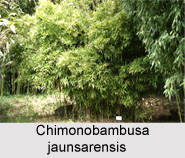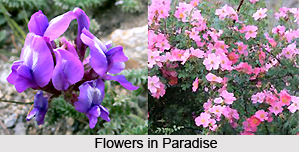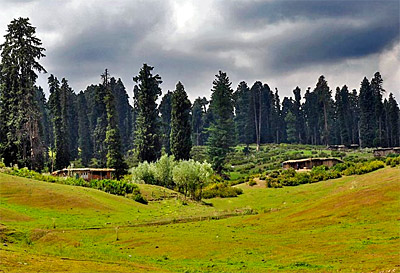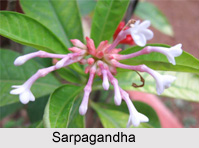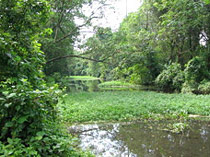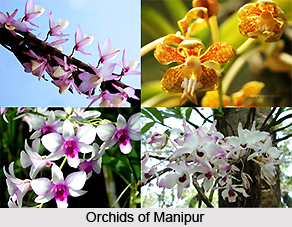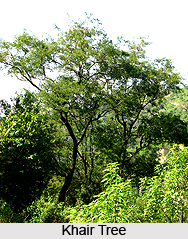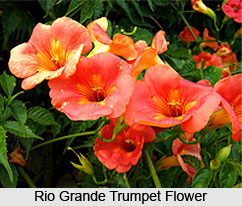 With the wonderful scattering of delicate and pinkish flowers around its base, the `Rio Grande Trumpet Flower` tree can very easily draw the attention of any passerby. This is a very charming little tree. The scientific name of the tree is `Bignonia Megapotamica`. The family of this tree names `Bignoniacece`. The tree is now fairly common in India.
With the wonderful scattering of delicate and pinkish flowers around its base, the `Rio Grande Trumpet Flower` tree can very easily draw the attention of any passerby. This is a very charming little tree. The scientific name of the tree is `Bignonia Megapotamica`. The family of this tree names `Bignoniacece`. The tree is now fairly common in India.
The tree has three blooms in the little clusters and they loose their neutral tints against the patches of sky and they carpet the grass below the tree. The flimsy and fresh charm of the flowers can easily provoke someone to be curious to inspect the tree more closely. The tree can achieve the height of about 7.5 to 10.5 m and it has an ash-grey wrinkled bark. It contains some elegant extensive branches and several small branchlets. The leaves are compound and unable to form a very compact crown. They consist one or two pairs and one terminal leaflet. They are bright olive-green in colour and smooth. Being unremarkably veined and oblong with blunt tips, they are about 10 cm in length.
Usually, the scentless flowers appear all through the year but never in a large amount. They appear in small groups at the ends of the branchlets and they spend their short lives hidden among the foliage and fall while still fresh. They are shaped in the form of a trumpet and of the palest violet pink. They posses five trilled and wrinkled lobes. The bright yellow tube of the flowers is painted inside with orange or purple streaks. The flower appears with momentary fragility. Though the tree does not produce a large amount of fruits, in some exceptional years, it shows a significant sprinkle of pendent green pods. Their formation is similar to that of cylinders and they are usually about 15 cm in length. The Indian women frequently use the flowers of this tree to decorate their hair. In the South of India, one of the species of this tree can be found that posses white flowers. Named as `Padiri` in Tamil, this specie is very common there. The Hindus utilize the aromatic flowers in their temples as an offering to their Gods.
